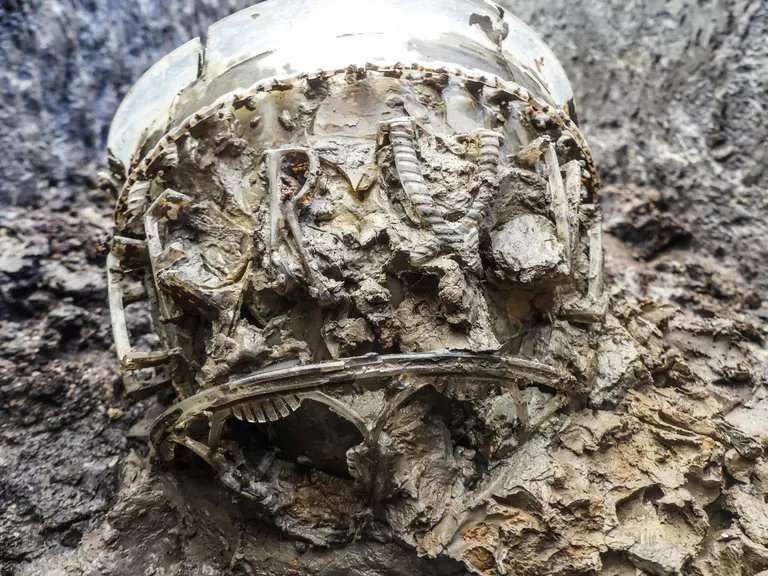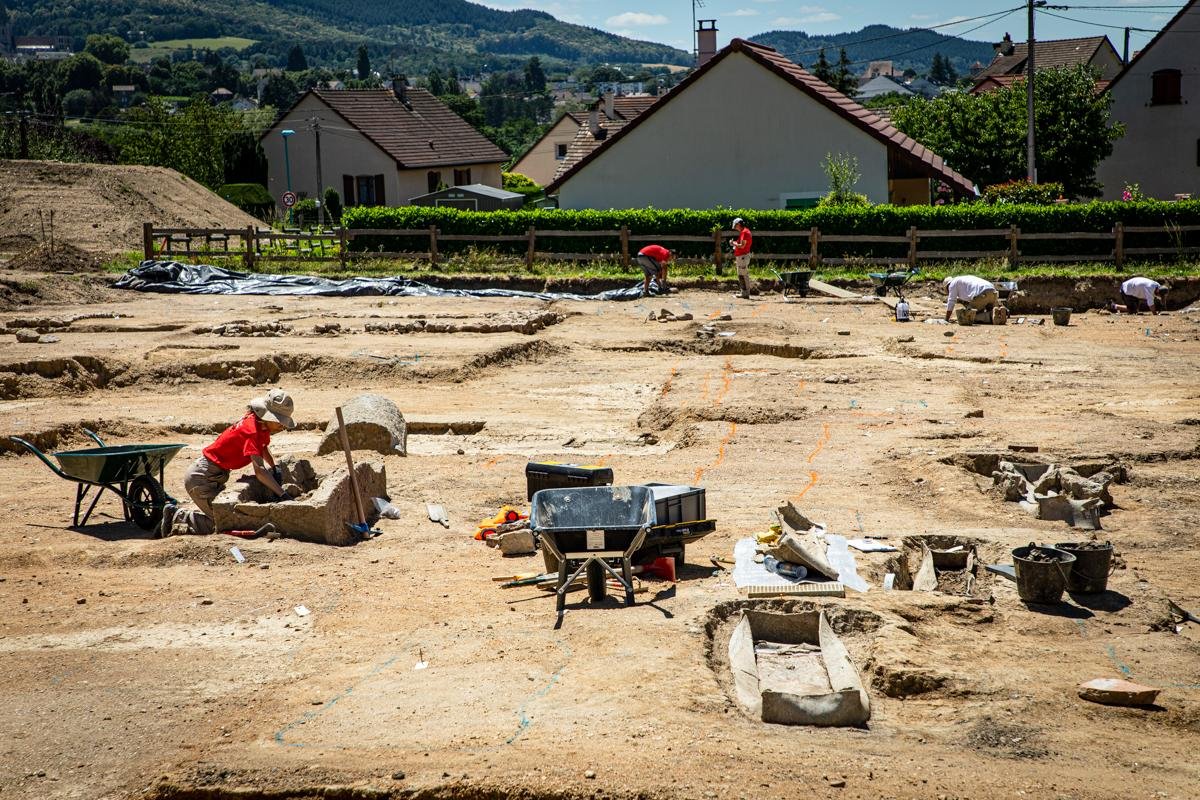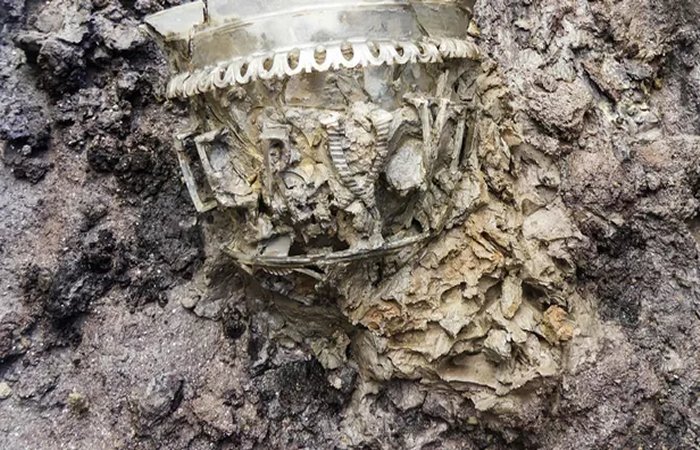Jan Bartek – AncientPages.com – It’s certainly not an artifact archaeologists can expect to find often so it’s understandable they are excited about this amazing discovery in central France.
An extremely rare ancient Roman vase has been unearthed in Autun (Saône-et-Loire) during the excavations of the 230 graves of an important necropolis.

“This is the first complete specimen discovered to date in Gaul,” explained Michel Kasprzyk. Credit: AFP
The dig was an archaeological success and scientists found many rare artifacts such as amber pins, a finely chiseled gold ring, and a gold ring set with garnet, encased in a sandstone sarcophagus, a bronze belt buckle, and blue glᴀss beads.
However, the most exceptional find was undoubtedly the diatretic vase.
A diatretic vase is a type of reticulated glᴀss vase from the late Roman era, around the 4th century, considered the culmination of Roman achievements in glᴀss technique. Only 10 complete diatretic vases have been discovered so far and the last one was found in North Macedonia in the 1970s.

View of the excavation site near Saint-Pierre l’Estrier in Autun, France. Credit: Christophe Fouquin, Inrap
The 12 cm high and 16 cm in diameter rare vase unearthed in the Gaul burial is adorned with decorative carved patterns, enhanced with letters in relief forming the words ”live happily“ (Live in felicity), said the archaeologists during a press videoconference.
“Deputy excavation manager Nicolas Tisserand said during the conference that for now, the piece will be “kept away from light, under drastic security conditions, before being studied and meticulously restored,” Art News reports.
According to archaeologist Michel Kasprzyk it the “first complete specimen discovered to date in Gaul,” referring to the Celtic tribes who inhabited Western Europe around the 4th century and eventually fell under Roman rule.
Le Figaro reports, the excavations were carried out from June to mid-September on the Gaul necropolis near Saint-Pierre l’Estrier, one of the oldest Christian churches in Burgundy.

It’s an exceptional archaeological find. Credit: AFP
During this period as many as 150 plots have been unearthed at the site, and they have led to the discovery of sandstone sarcophagi and lead and wooden coffins. An array of precious gems, furniture, and jewelry have also been uncovered, including small gold earrings likely crafted for a child.
“These exceptional and extremely rare discoveries are interesting avenues for the study of the aristocracy of Autun, precociously Christianized at the beginning of the 4th century,” said Kasprzyk.
The entire site, which includes an 11th-century basilica and monastery, has been under study by archaeologists and historians since the mid-1970s due to its rich repository of local and regional history. In 1979, the religious structure was designated a historic monument.
See also: More Archaeology News
” These exceptional, extremely rare discoveries are interesting avenues for the study of the aristocracy of Autun, precociously Christianized at the beginning of the 4th century “, commented Michel Kasprzyk, adding that the unearthed artifacts “will make it possible to illustrate and corroborate testimonies which were then known only by the texts ”.
Written by Jan Bartek – AncientPages.com Staff Writer





